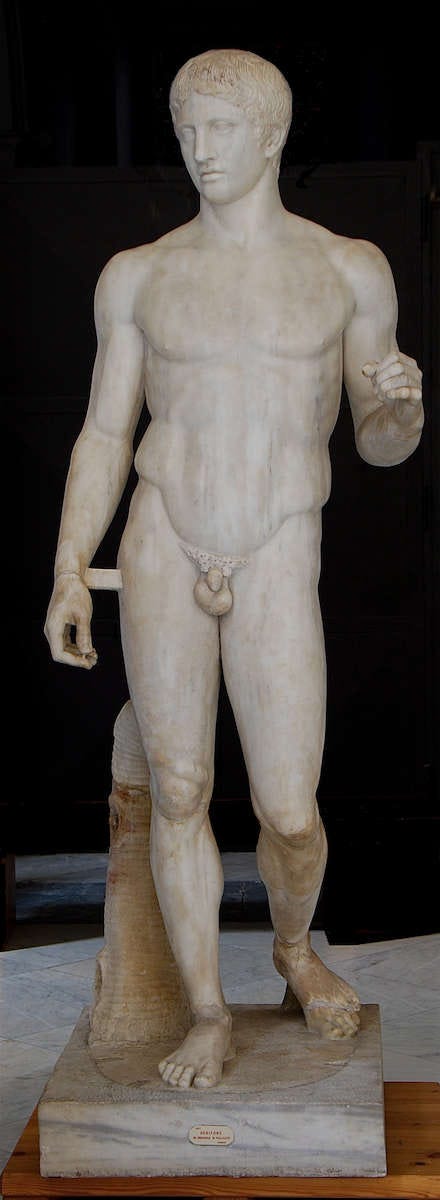Soulscape 11, The Future of Culture Depends on Art
From My Upcoming Book: Soulscape – The Role of Art in Our Lives
Polyclitus' Doryphoros, original c. 450 BCE, copy from the Palaestra of Pompeii, 1st century CE, Naples, National Archaeological Museum. Image: Kyoko Sengoku-Haga.
Polyclitus' Doryphoros exemplifies harmony, confidence, simplicity, clarity, strength, beauty, and authenticity—qualities that also serve as foundational elements for a flourishing civilization. The sculpture of the nude man celebrates the individual and authenticity, suggesting that each person matters. Through his treatise The Canon, Polyclitus shared his theories and techniques with the world, helping usher in the Greek Golden Age.
His work also had a lasting impact, inspiring the High Renaissance. Polyclitus' emphasis on proportional balance not only defined physical beauty but also reflected a deeper philosophical understanding of problem-solving on a grand, perceptual scale. When artists lost this mastery of proportions, they not only lost the ability to create beauty, but this shortcoming tragically led to the decline of culture, justly known as the Dark Ages.
Art is a window to our future.






Beautiful ❤️
What a great statue! Do you think Michelangelo every saw it?
Thanks for sharing!